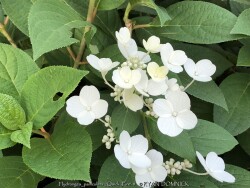

Quick Fire Fab® Panicle Hydrangea (Hydrangea paniculata 'Quick Fire Fab') is the first to bloom! Quick Fire blooms about a month before any other panicle hydrangea. Flowers open pure white then turn pink, and will be an extremely dark rosy-pink in the fall. The flower color on Quick Fire hydrangea is not affected by soil pH. Blooms on this super-hardy and easy to grow hydrangea are produced on new wood, which means that you will see flowers even after even the harshest winters. Beautiful for use as a cut (fresh or dried) flower. Unlike other panicle hydrangeas, Quick Fire Fab also has excellent fall foliage color for a final hurrah before winter. This is a very hardy flowering shrub good for full sun locations - the hotter your climate, however, the more shade the plant will require. Good for groupings and in mass plantings, shrub and perennial borders, as a specimen, a screen or a hedge. Panicle hydrangeas like Quick Fire Fab are very easy to care for. They can grow in most soils, provided they are well-drained. Panicle hydrangeas bloom on new wood, which means they can be pruned in spring and will still bloom that season. We recommend cutting them back by about one-third their total height in early spring, just as the new growth is beginning to emerge on the stems. This will serve to remove the spent blooms and ensure that the season's growth comes from the heavier, thicker buds further down the plant. If blooms do not age to pink and red, this indicates that the plant is either in too much shade, that it experienced drought stress, or that night time temperatures were unusually high. In Eastern Kansas, this cultivar performs reasonably well. Heat and drought are tolerated if in morning sun. In full sun provide ample water and expect some leaf burn if summer temperatures exceed 100 degrees F. Cold tolerance is no problem. No disease or pest problems. All Proven Winners® plants are legally propagated, healthy and vigorous, true to name, and tagged with color pictures and growing information.


Berry Poppins & Mr. Poppins Combo Winterberry, is also known as Ilex verticillata 'Berry Poppins & Mr. Poppins'
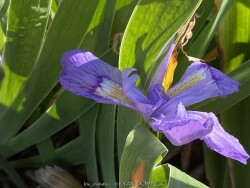

***Description for this perennial available with future update!***
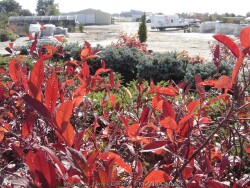

Virginia sweetspire (Itea virginica) is a native shrub found along creeks and streams in the eastern United States. Foliage consists of a simple leaf, medium to light green, and usually glossy. White cascading flowers cover the plants in spring for about a month with pollinators flocking to the occasion. Fall color is outstanding shades of red and purple. Leaves cling to the stem and are very persistent down to about 10-15°F often finally dropping in December. Stems during the winter take on an attractive reddish-brown and green coloring. Sweetspire is truly a four-season shrub! In the landscape, combine with native plants, hardy tropicals, or summer flowering plants. These plants can tolerate saturated soils and are perfect for rain gardens or any other rich soil garden areas. North exposures are fine in zone 6 but not any further north as winter kill becomes a problem in zone 5. Water is usually the limiting factor in southern climates zone 7-9. Sweetspire is highly sensitive to iron chlorosis so avoid alkaline soils. In our eastern Kansas climate, we avoid afternoon sun and dry soils. Full shade is tolerated but not dry shade. Fall color will be reduced or nonexistent in full shade. Morning sun is best for avoiding leaf burn but still allowing fall coloring. Overall, this is a great garden plant when sited in the right conditions. Itea virginica 'Merlot' features more mounded, compact stature and more persistant burgundy fall color making it an improvement over older varieties such as the old favorite 'Henry's Garnet'. Flowers are scented!
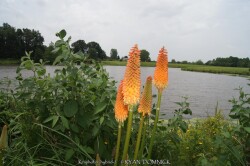

***Description for this perennial available with future update!***


Dream Catcher Beautybush, is also known as Kolkwitzia amabilis 'Dream Catcher'
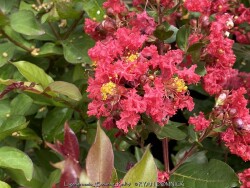

Crapemyrtle (Lagerstroemia) is a beautiful summer flowering shrub that dies down to the ground as a perennial each year in Zone 6 Kansas. Flower colors include bright red, pink, magenta, purple, and white. Many cultivars have been released improving foliage color, disease resistance, and flower blooming length. Newer cultivars now have maroon or reddish foliage adding interest before blooming. Beautiful fall color is often overlooked; shades of red, orange, and purple develop when Night temperatures reach into the 40s. In Kansas, crape myrtles grow best with hot south or west exposures or on south facing berms or hillsides. But they are suitable in any garden location as long as they are in full sun, they will build enough energy to come back from complete winter top-kill each year. Generally are 40 inches of rain per year is sufficient without extra watering, but if drought conditions occur, flowering will be reduced or shortened. Brief periods of excessive water and saturated soils are tolerated adding to their versatility. Many people from the south associate Crapemyrtles as a tree. That is true that in Texas and much of the Southeast, beautiful tree forms with exfoliating bark will occur because of mild winters. In Oklahoma and Arkansas for example crapemyrtles are usually grown as large shrubs experiencing major winterkill every 5-10 years. In Kansas and Missouri, or where temperatures regularly get to 0°, all top growth will die back and they will be grown as a woody perennial. After flowering and beautiful fall color is dropped, many people leave crapemyrtles throughout the winter to enjoy the winter interest of the dried seed heads. By March or April, cut plants close to the ground and watch for new growth. Flowering occurs on new wood and is much larger and more dramatic on sprouts from the ground. Flowers are often twice as big when grown this way. In the past, only fast-growing tree size cultivars for appropriate and Kansas because they have the ability to recover the fastest from complete winterkill and grow into a flowering-sized shrub by July. Now there are dwarf cultivars that are wood-hardy to -10 zone 6 for those not wanting to worry about winterkill. No disease or pest problems. Crapemyrtle are awesome for pollinators in the late season garden and especially effective when combined with vitex, butterfly bush, and/or caryopteris. Enduringtm Red Crapemyrtle (Lagerstroemia 'PIILAG B5') features clusters of bright true scarlet-red blooms appear all summer against the glossy green foliage. Leaves emerge red and turn to dark green. This mid-size variety grows 4 to 5 feet tall and wide with a tight growth habit. Developed by Greenleaf Nursery Company as part of the Garden Debut® Collection.
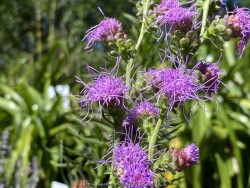

***Description for this perennial available with future update!*** >>>>> Blooms later (late summer to fall) than most other Liatris species. This species is distinguished from other Liatris species by its rough appearance and rounded individual flower clusters. Good winter drainage is important.


***Tree descriptions available with future update!***


***Description for this plant available with future update!***
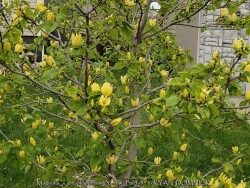

Yellow Flowering Magnolia (Magnolia x brooklynensis 'Yellow Bird') is a rare jewel in the landscape: a tree with giant canary yellow flowers! Yellow Bird is an upright, conical to pyramidal, large deciduous tree that can grow 40 feet tall in Kansas. This magnolia would be a fine residential specimen in sheltered locations with moist, rich soil with plenty of space to spread. Magnolias in general are a family of plants that have been around for millions of years and are among the most primitive of all flowers. In fact, most magnolia flowers evolved before bees and are thus pollinated by beetles. Magnolias generally grow in moist, well drained soils in sun or shade. They have no serious pests or disease problems.
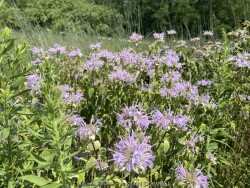

Eastern Beebalm / Monarda, is also known as Monarda bradburiana. >>>>> Monarda bradburiana is often considered a superior beebalm for the garden. Attributes include its mildew resistance, short stocky stature, earlier bloom time and less aggressive spreading than other Monardas. Monarda fistulosa has similar appearance and culture and could be substituted in some situations if a longer blooming time is desired but with higher incidence of powdery mildew if air circulation is poor.
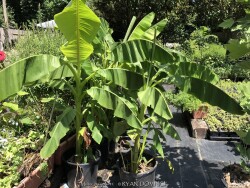

Create a tropical effect in your landscape with these large fast-growing cold hardy Musa basjoo! (also called Japanese fiber banana) Each leaf can be 6 feet long and 2 feet wide. Leave in ground and mulch 6" thick and they will return as perennials every year. If planting on the south side of a house in full sun, little protection is needed. These have proven hardy in Lawrence, KS (zone 6a) for over 20 years. In Eastern Kansas, typically our 40 inches of rainfall is sufficient without extra water in good soils. This species will tolerate some degree of drought but fastest growth will occur in rich well-drained soils with extra water and fertilizer provided during the summer. Great for summer wet areas in full sun or around swimming pools (creates no messes). Plants are capable of growing 15-18 feet by the end of summer when established and happy! A more realistic height is 7-12 feet under average conditions. Banana trees will slowly divide and send up offsets; this is a desirable sign that the banana tree is establishing well. If 1-2 feet of trunk is protected with a large pile of leaf mulch, you will get a flower followed by small inedible bananas the 2nd year on the largest trunk. The flowering trunk will die but the offsets will grow. Bananas will not tolerate excessively wet soils during dormancy. Sunburning can happen with summer temperatures over 100 degrees F but it will quickly outgrow the damage. Bananas need at least 1/2 day of full sun and protection from excessive winds to properly grow. Listed by many sources as hardy to zone 6 or 7, with proper mulching and placement near a foundation, you can easily grow this into zone 5 or possibly lower. In our trial gardens in Lawrence, KS (zone 6a), two well established specimens have thrived for 15 years and counting. During the arctic blast of February, 2021, lows down to -17 degrees F on Feb 16th, 2021 were recorded. The longevity of this cold blast was also impressive: 10 days on a row with highs of 10-15 degrees F or lower, 8 nights of lows in the single digits and negatives, and 36 straight hours of 0 degrees F and mostly lower. A hard ground freeze was inevitable; hundreds of plants around town survived this event returning a little late the following spring but otherwise just fine. Some were mulched with ground up leaf mulch, some were not.
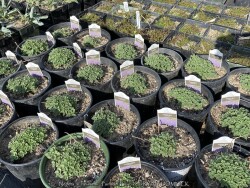

Nepeta (Catmint) Is one of the most adaptable, permanent perennials available in our climate and in your landscape! Definitely a "once it's their plant if there forever". Originally native to the Caucasus, Iran, Iraq, Turkey, there are numerous cultivars now with improved flowering and growth habit. Generally, the mint green foliage is fine textured and compact. Spring emergence in Kansas zone 6a is very early (usually in March) and will tolerate late freezes. This creates very early season interest in the garden while other plants are still dormant. Usually within a month of emerging, lavender-blue flowers cover the plant for up to six weeks. Pollinators enjoy the feast especially when catmint is used as a mass planting groundcover. Following spring flowering, many varieties develop attractive foliage and continual sporadic flowering. Some varieties have another big flower show in the fall especially if they are trimmed back and deadheaded once in late summer. Foliage is persistent and remains attractive late into the fall down to about 20° F providing late-season interest. Winter dried foliage is a somewhat attractive light gray and will eventually need to be cut or mowed to the ground before new growth emerges in the spring. Catmint is tolerant of almost any kind of soil including clay but will not tolerate poorly drained soil. Frequent watering is OK in normal garden soils but there is a risk of excessive growth and flopping. Catmint looks best in full sun but will still flower and look decent with part shade or 1/2 day full sun. This makes it adaptable to any side of the house even called northside if it gets full sun by mid-summer when the sun angle gets high. Cold hardiness or heat stress is not a problem at all in zone 6. Combine with just about any other perennial or shrub with a different flower and leaf color. It's hard to imagine a perennial or pollinator garden in Kansas without Catmint! Contrary to popular belief, cats do not destroy or eat this plant but may be attracted to it and create a nest beside it. They are really after catnip, a closely related plant.
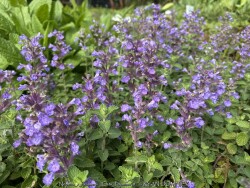

Nepeta (Catmint) Is one of the most adaptable, permanent perennials available in our climate and in your landscape! Definitely a "once it's their plant if there forever". Originally native to the Caucasus, Iran, Iraq, Turkey, there are numerous cultivars now with improved flowering and growth habit. Generally, the mint green foliage is fine textured and compact. Spring emergence in Kansas zone 6a is very early (usually in March) and will tolerate late freezes. This creates very early season interest in the garden while other plants are still dormant. Usually within a month of emerging, lavender-blue flowers cover the plant for up to six weeks. Pollinators enjoy the feast especially when catmint is used as a mass planting groundcover. Following spring flowering, many varieties develop attractive foliage and continual sporadic flowering. Some varieties have another big flower show in the fall especially if they are trimmed back and deadheaded once in late summer. Foliage is persistent and remains attractive late into the fall down to about 20° F providing late-season interest. Winter dried foliage is a somewhat attractive light gray and will eventually need to be cut or mowed to the ground before new growth emerges in the spring. Catmint is tolerant of almost any kind of soil including clay but will not tolerate poorly drained soil. Frequent watering is OK in normal garden soils but there is a risk of excessive growth and flopping. Catmint looks best in full sun but will still flower and look decent with part shade or 1/2 day full sun. This makes it adaptable to any side of the house even called northside if it gets full sun by mid-summer when the sun angle gets high. Cold hardiness or heat stress is not a problem at all in zone 6. Combine with just about any other perennial or shrub with a different flower and leaf color. It's hard to imagine a perennial or pollinator garden in Kansas without Catmint! Contrary to popular belief, cats do not destroy or eat this plant but may be attracted to it and create a nest beside it. They are really after catnip, a closely related plant. Nepeta x faassenii 'Cats Pajamas' in a new variety from Proven Winners® Unlike older varieties that only produce flowers at the top of the stems, this improved Catmint has blooms from the soil to the tips of the stems. Even when the flowers are past peak, the color of the rosy purple calyxes give your garden an additional splash of color. Compared to "Cats Meow", its flowers are the same but overall plant height is about 1/2-2/3rds. Plus, it stands strong with no flopping, getting wider and growing to a broad mound as the season progresses. All Proven Winners® plants are legally propagated, healthy and vigorous, true to name, and tagged with color pictures and growing information. PERENNIAL OF THE YEAR in 2021!
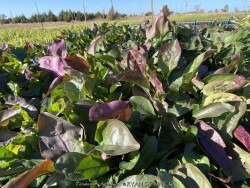

Foxglove Beardtongue / Native Penstemon, is also known as Penstemon digitalis. >>>>>
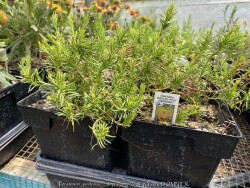

***Description for this perennial available with future update!***


Russian sage (Perovskia atriplicifolia) is a perfectly well-adapted plant from Afghanistan, Pakistan, and Central Asia. It is the perfect match to hot Kansas summers, cold winters, rocky alkaline soils, and drought. Fine-textured foliage is upright and shrub-like consisting of a mint green to blush green color. Lavender to bluish flowers emerging in mid-summer are extremely long-lasting. In fall, Russian sage foliage dies back with the first hard freeze and becomes a whitish-gray color adding awesome winter interest. Imagine this combined with ornamental grasses or bright winter-colored plants like Color Guard Yucca. The only maintenance is cutting the plant back to you about 6 to 8 inches in the spring. New buds emerge from the root system and lower parts of the woody growth. New cultivars of Russian sage do not spread by rhizomes like the species. Russian sage thrives in dry well-drained soils with plenty of full sun and air circulation. They are suitable for hot west or south exposures, berms, parking lot islands, hell strips along roads, and other inhospitable locations. They tolerate poor soil including rock, sand, clay, and alkalinity. They do not tolerate poor drainage and will be floppy even in part shade. Russian sage flowers are highly attractive to honeybees. There are several improved cultivars with improved blooming, improved growth habit, and elimination of spreading. "Tough as steel! A new seed introduction by PanAm Seed with a sturdy, controlled habit in the landscape. 'Blue Steel' combines the best summer-blooming lavender-blue colour with outstanding late-season garden performance and has aromatic, silvery foliage carrying clouds of small blue flowers on strong silver stems that do not break or split easily. It is very hardy and Heat/drought tolerant." - PanAm Seed
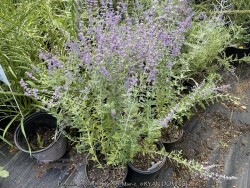

Russian sage (Perovskia atriplicifolia) is a perfectly well-adapted plant from Afghanistan, Pakistan, and Central Asia. It is the perfect match to hot Kansas summers, cold winters, rocky alkaline soils, and drought. Fine-textured foliage is upright and shrub-like consisting of a mint green to blush green color. Lavender to bluish flowers emerging in mid-summer are extremely long-lasting. In fall, Russian sage foliage dies back with the first hard freeze and becomes a whitish-gray color adding awesome winter interest. Imagine this combined with ornamental grasses or bright winter-colored plants like Color Guard Yucca. The only maintenance is cutting the plant back to you about 6 to 8 inches in the spring. New buds emerge from the root system and lower parts of the woody growth. New cultivars of Russian sage do not spread by rhizomes like the species. Russian sage thrives in dry well-drained soils with plenty of full sun and air circulation. They are suitable for hot west or south exposures, berms, parking lot islands, hell strips along roads, and other inhospitable locations. They tolerate poor soil including rock, sand, clay, and alkalinity. They do not tolerate poor drainage and will be floppy even in part shade. Russian sage flowers are highly attractive to honeybees. There are several improved cultivars with improved blooming, improved growth habit, and elimination of spreading. Here's a Russian Sage (Perovskia atriplicifolia 'Rocketman') that doesn't get too tall, has stronger stems and a more upright habit than most. Its aromatic, grey-green leaves are entirely like those of 'Little Spire', clinging to the silvery stems. Each stem is topped with large, fluffy textured, lavender blue flowers beginning in midsummer. Like most Perovskias, the colorful calyxes remain on the stems long after the flowers are spent, making it look like it is still blooming long after it is actually done. You'll have great color on this plant from about July through October in the Midwest. A perfect perennial for hot, dry climates and also exceptionally cold hardy. Perovskia can be used in a wide variety of environments with little attention through the season - a reason they have long been a staple of landscapers. Expect these plants to be a little later to emerge in spring, but also to offer color well into fall. Rocketman Russian Sage is a Walters Gardens Inc. introduction.
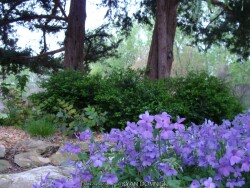

***Description for this perennial available with future update!***


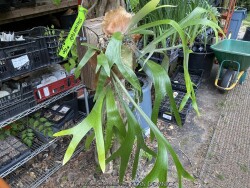

Staghorn / Elkhorn Fern (Tropical), is also known as Platycerium bifurcatum


Chinese Mayappple >>>>> ***Description for this perennial available with future update!***
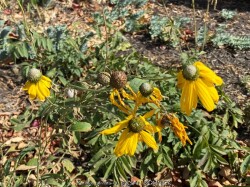

***Description for this perennial available with future update!*** Mexican Hat, is also known as Ratibida columnifera
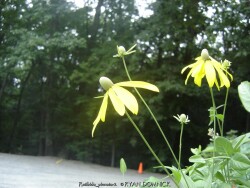

Grey-headed Coneflower, is also known as Ratibida pinnata


Fine Line Columnar Buckthorn, is also known as Rhamnus frangula 'Fine Line'
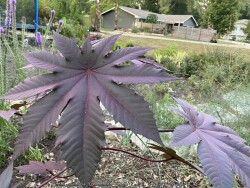

Castor Bean (Ricinus communis) is a giant annual grown for its large star shaped leaves and highly ornamental summer flowers and spiky seed pods. Being one of the fastest growing plants, it will germinate from a seed and can reach 5 feet tall in one month. Ultimate height at the end of the season is usually 8 to 12 feet. Growth rate, however, is directly proportional to available water and soil quality. In poor dry soil areas, a height of 3 feet may be achieved with some flowering by fall. In the landscape, this amazing annual can be used for lots of coverage is needed quick. Maintenance is considered medium. Staking by mid-summer may be necessary to prevent plants from blowing over. All dead foliage should be removed right before or promptly after the first fall freeze. At that time, seeds can be clipped off and immediately planted if you would like castor beans to return next spring. Seeds may also be harvested and stored and will not survive winter outside unless planted or covered by a deep layer of mulch. If planting seed in the spring, wait till soil warms up in early May. Seeds germinate quickly and extremely easily with almost no effort. Castor Bean plants do not easily overwinter indoors as a house plant due to their need for tropical growing conditions and high humidity. Another word of caution is that castor bean seeds are extremely toxic. However there is almost never any poisonings because the seed tastes so bad if chewed that anyone in their right mind would spit it out. Seeds that are swallowed whole usually survive the digestive system and not cause poisoning. The plant itself is not very toxic so there is no reason not to grow it. If you are concerned about the beans, or you have small children, just cut off and dispose of the flowers after they bloom and before seeds ripen. You'll have plenty of time (1-2 months) before the bright red spiky seed pods open and turn brown. Purple Castor Bean (Ricinus communis 'New Zealand Purple') features bright purple foliage and dark red seed pods.
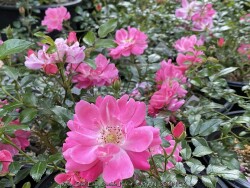

Imagine your garden with non-stop pink roses! Oso Easy® Double Pink rose is simply an unstoppable bloomer. In our many years evaluating it, it was rarely without its fully petaled, true pink blooms - it just wants to flower and flower and flower. All roses that we consider must prove to be resistant to common rose maladies like powdery mildew and black spot and Oso Easy Double Pink passed that test with flying colors! If you want to enjoy months of flowers with minimal effort, this rose deserves a spot in your landscape. In Lawrence Kansas, performance has been impressive and low maintenance. Currently, no serious pest problems exist but we are careful not to recommend planting roses in large mass groupings in case a pest or disease like Rose Rosette Virus (RRV) becomes a problem. Mixed small plantings of roses and non-host plants may slow the spread of RRV in landscape plantings. As with most roses, thorns may be an issue with children or pets. Usually rose thorns are short and don't cause any serious injury: it creates more of a life lesson about respecting and being careful around the dangers in our world. All Proven Winners® plants are legally propagated, healthy and vigorous, true to name, and tagged with color pictures and growing information.
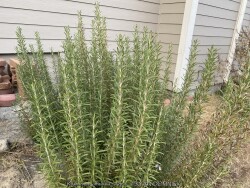

Rosemary is one of the most well-known herbal and edible plants. It features grayish green aromatic and evergreen foliage with small white flowers. Blooming is usually short-lived and not a main reason to grow Rosemary. This plant is native to Mediterranean climates with average moisture in the summer and dry, mild winters. Because of its heritage, it resents cold wet winters and needs well-drained sandy, silty, or rocky soil. In the short term, it will typically grow in any soil during the summer making it very useful even as an annual. In Kansas landscapes, it is commonly used as an annual or short-lived perennial with winter kill (below 0 to -10 degrees F) being it's number one enemy. It does not have very good ability to come back from the lower portion of the stem or root system like other perennials after winter-kill. Root rot is also likely when placed in poor draining soil and sometimes even in rich garden soil. Summer heat not a problem; to have a chance of survival as a perennial, plant in a protected area on a South or West wall. Rosemary is actually a woody shrub in mild zone 8 and 9 climates and grown like a in perennial in zone 6/7. When grown as a perennial, every so often you do need to trim it back to a few inches off the ground. Rosemary combines nicely with any other flowers or where needing a perennial with evergreen winter color. In Kansas, Rosemary is commonly grown as an outdoor patio plant that you move in for the winter to enjoy fresh clippings. When grown that way, remember that Rosemary is cold hardy to about 0 degrees F so you can skip the first few freezes before moving it in if you forget. This delay is probably beneficial because if you keep it in the house too long especially with poor light it will display poor quality elongated growth and die. Keep in a bright window and do not let it dry out completely. Strangely enough being from a desert climate, rosemary doesn't really warn you by wilting, if the soil gets extremely dry for too long, it just suddenly dries up and dies. Despite all of these pointers, rosemary is very easy to overwinter in the house when placing back out in the following spring. 'Arp' is exceptionally cold hardy; possibly the most cold hardy rosemary being a treu perennial in zone 6 with dark blue hummingbird feeding flowers.
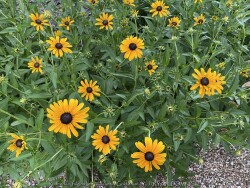

***Description for this plant available with future update!*** >>>> Good variety for customers with irrigation systems that water too much for other Black-eye Susan varieties.
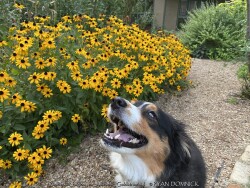

***Description for this plant available with future update!***


Hardy Pampas Grass / Plume Grass, is also known as Saccharum / Erianthus ravennae
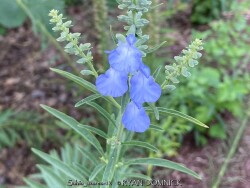

***Description for this plant available with future update!***
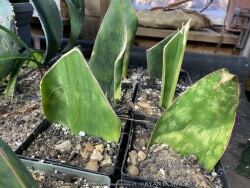

Extra wide blue-green speckled leaves from this Whale Fin Sansevieria (Sansevieria / Dracaena masoniana) make an excellent architectural statement. Most Sansevieria are native to are native to rocky, dry habitats in tropical Africa but used as a patio or house plant in Kansas. Grow in full sun to part sun with optional extra watering including that which comes from rainfall. Plants with plenty of time to acclimate will thrive in full sun but be careful not to rush it or sunburning will occur. Generally if moving outside for the summer, allow 2-3 weeks of part shade or morning sun before placing in full sun. Or just keep in part shade or under an overhang. Repotting may or may not be needed depending on how large you want the plant to grow; plants can continue to grow and tolerate extremely root-bound pots but may need wind bracing. Some species root systems will build up enough pressure and will simply break the pot as a friendly reminder when it's time to re-pot! Protect from temperatures below 45 degrees F and move into a bright window over the winter with no watering. Do not allow Sansevieria to freeze or even get close to freezing especially if soil is wet or death may occur. As a winter house plant, it will look presentable all winter long with just a few monthly or no waterings if you forget. As a permanent house plant, provide bright light and allow the soil to dry between waterings for many years of carefree enjoyment. Potted plants are very low maintenance needing only old leaves trimmed once per year. Whale Fin Sansevieria is one of the more slow-growing and most sought-after snake plants often grown as a specimen house plant. Largest leaves of all sansevierias! Whale Fin is rare and will command a higher price than most other houseplants.
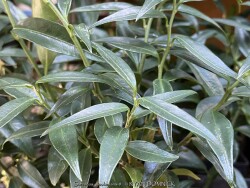

Himalayan Sweet Box (Sarcococca hookeriana) is planted for its evergreen dark green foliage and white flowers. Foliage maintains well all year provided that certain cultural conditions are met. Native to shaded mountain areas in forests, valleys or along streams in the Himalayas, it needs moist soil rich in organic matter avoiding too much clay. It is somewhat drought tolerant once established. If low temperatures hit -5 to -10 degrees F, foliage finally dies back to the ground and re-emerges in early spring. Generally this plant can decline after a few years of Kansas climate but is worth a try in perfect soils in well-tended shade gardens. If low temperatures hit -10 degrees F, it may kill an un-mulched plant; protect any zone 6 plant with thick layer of mulch. Lack of moisture and competition with weeds seem to be an issue but it survives just fine. Growth is extremely slow. This is one of the most deep shade tolerant plants available.
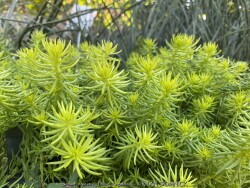

***Description for this perennial available with future update!*** NEEDS EDIT>>>>>> Sedum Prima Angelina has a denser, more compact habit and more vivid golden color than Angelina. According to Plant Delights nursery, "Sedum rupestre 'Prima Angelina' is a superb new improvement of the wildly popular, Sedum 'Angelina'. This compact, better-branched, brighter colored sport was discovered by Ohio's Jared Hughes. Sedum 'Prima Angelina' has thrived in our hot, humid summers. We particularly like that this new gem remains bright gold in cold weather, where its' parent takes on an orange cast in winter. So far, no flowers have been observed on the sport."
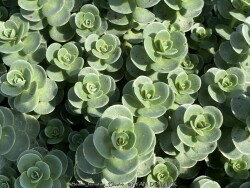

Native White Sedum, is also known as Sedum ternatum
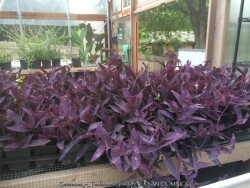

Purple Heart (Setcreasea / Tradescantia pallida 'Purple Heart') is the most versatile plant in out library: it can be an annual, perennial, patio plant, house plant, or hanging basket in wet or dry soil in full shade or full sun. It can handle growing in standing water or bone dry. In dry soils, it shows no drought stress, continuing to grow with a deeper purple shade. In moist soils, this plant will grow rapidly. In shade, the foliage becomes more greenish but still looks attractive. In Kansas, it is usually grown as an annual. Brilliant purple leaves contrast small pink flowers in the summer! Plants will quickly fill an annual bed with bright purple color all summer til first hard freeze. In the ground, it is possible to overwinter these in the ground in Kansas by placing a 6-8" mound of mulch over deeply planted rhizomes. Not sure what's easier, buying and moving that much mulch or replanting in spring?: you decide. If growing as a potted plant and trying to overwinter, allowing the foliage to frost is ok, it will not kill the root system. However, do not allow the pot with rootball to freeze solid or go below 20 degrees for more than a few hours. Allow to go dormant as needed with little care, just cut off dead foliage and place back out in April or May with a time-release fertilizer. Many plants will die back slowly and remain attractive inside for most of the winter. Purple heart plants have no insect, disease or animal pests. Botanical name has recently changed from Setcreasea to Tradescantia. A variegated form is also available. This plant survived in our Lawrence, KS display garden down to -16 degrees F and a week of single digit highs in February, 2021 with mulch.


***Description for this perennial available with future update!*** >>>>>> This fall blooming aster does not splay open like other Asters can. According to Walters Gardens "Bringing refinement to fall blooming Asters, 'Grape Crush' produces a large, very round mound with densely packed flowers. We have observed no lodging in our trials, a phenomenal achievement for fall blooming Asters. Very rich, dark purple flowers are produced above dark green foliage in early fall to midfall. A perfect finale to the growing season!" Asters are native to North America and are generally very easy to grow.
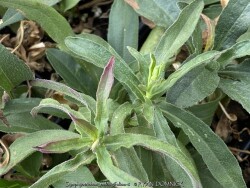

***Description for this perennial available with future update!***
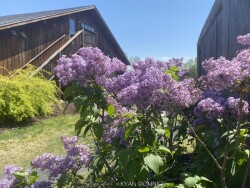

>>>>> Purple Persian Lilac, is also known as Syringa x persica. This lilac has wonderful fragrance and good fall color. The smaller-than-usual growth of this shrub makes it easy to place in the front of a border, or use as a low hedge along the drive or sidewalk.
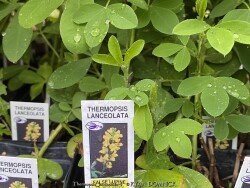

Yellow False Lupine / Lanceleaf Thermopsis, is also known as Thermopsis lanceolata. This plant has beautiful green narrow leaves and black stems on new emerging plants before flowering. Thermopsis lanceolata, the tapered false lupin, is a species of flowering plant in the legume family Fabaceae, native to Russia, Kazakhstan, Mongolia, Nepal and China.
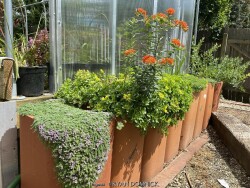

Creeping Thyme (Mixed Varieties), is also known as Thymus sp.
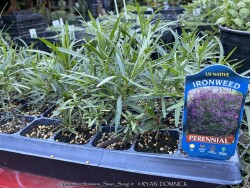

***Description for this perennial available with future update!*** >>>>> Narrow-leaf Ironweed (Vernonia lettermannii) is a relatively new plant to horticulture; originally discovered in Arkansas along gravel stream beds in the wild. The Iron Butterfly cultivar (Vernonia lettermannii 'Iron Butterfly') is a dwarf compact cultivar introduced by Dr. Allan Armitage at the University of Georgia. This is a true four-seasons perennial that belongs in almost every perennial garden. In the spring, narrow dark green foliage resembling Amsonia hubrichtii creates a compact shrub-like appearance. The growth is so dense that no weeds have a chance of invading a mature stand of plants. By mid to late summer, gorgeous deep purple fine-textured flowers cover the plant for 4-6 weeks. Butterflies, bees, and other pollinators flock to the occasion. Following the bloom, the flower stocks are sturdy and hold up very well for fall and winter interest. The flowers themselves produce mostly non-viable seed and cling to the plant creating a silvery shine whenever sunlight hits it. This can be very useful and dried flower arrangements as well as winter interest gardens. At some point in the winter, all top growth will need to be cut back as this is the only maintenance required. Despite being native to gravel and sand bars along rivers, Iron butterfly Vernonia surprisingly can handle very dry clay, gravelly, or sandy soils along with short periods of flooding. Permanently wet soil is not favored but it can handle the upper portions of a rain garden. Iron butterfly has only one pest problem and that is rabbits! If rabbits are an issue, just put a bowl-shaped chicken wire cage around the plants for the first year. By year #2, the rapidly growing foliage will outgrow any detrimental rabbit browsing. This is definitely one of the most adapted landscape plants in Kansas zone 6a with no problems with heat or cold, dry or wet! It's hard to imagine a perennial garden without this plant!
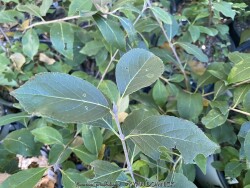

Blackhaw Native Viburnum, is also known as Viburnum prunifolium


***Further Description available with future update!*** Description from First Editions: Delta Blues™ Chastetree is an intermediate sized shrub that has fragrant, dark blue-purple flowers that attract butterflies and other pollinators. Dark green, fragrant leaves contrast against the colorful flowers that bloom from June to October. Delta Blues™ is deer resistant, salt tolerant, and adapts to acid or alkaline soils as long as the site is well drained. Fun fact: Delta Blues™ was the first intermediate Vitex in the market! DELTA BLUES™ CHASTETREE VITEX AGNUS-CASTUS 'PIIVAC-I' PP25,914


***Description for this plant available with future update!*** >>>>>Desert Willow is a small open irregularly branched tree or large shrub with bright green narrow leaves (but not related to true willows) It features gorgeous pink, white and magenta snapdragon-like flowers with yellow throats. Blooming season is immensely long beginning in June continuing all summer until frost. Desert Willow grows in all soil types here in Kansas but prefers rich silty loam. It will not grow in excessively wet anaerobic soils though. Absolute full sun is needed for best growth to produce flowers and avoid spindlyness. In the landscape, Desert Willow can be used as a specimen shrub or small tree. It handles hot west for south locations very well. It's native range covers most of the Southwest and western Texas along streams and riparian areas. Being surprisingly cold hardy here, Several Desert Willow cultivars can be found at the Denver Botanic Gardens in Denver CO (zone 5b) and at the Dyck Arboretum in Hesston, Kansas (zone 6b). Bubba Desert Willow (Chilopsis linearis 'Bubba') has been thriving in our display garden and other Lawrence, KS locations for over 15 years and has endured temperatures as low as a -18. During the most severe winters, winter kills it down to the ground. However, just like Crapemyrtle or Butterfly Bush, Desert Willow blooms on new wood and at a young age with blooms even occurring on 3 foot tall nursery plants. Water sprout regrowth from established landscape plants is rapid with heights reaching 5-6'. These blooms are more numerous and larger than normal, especially with a handful of time-release fertilized applied in the early spring.